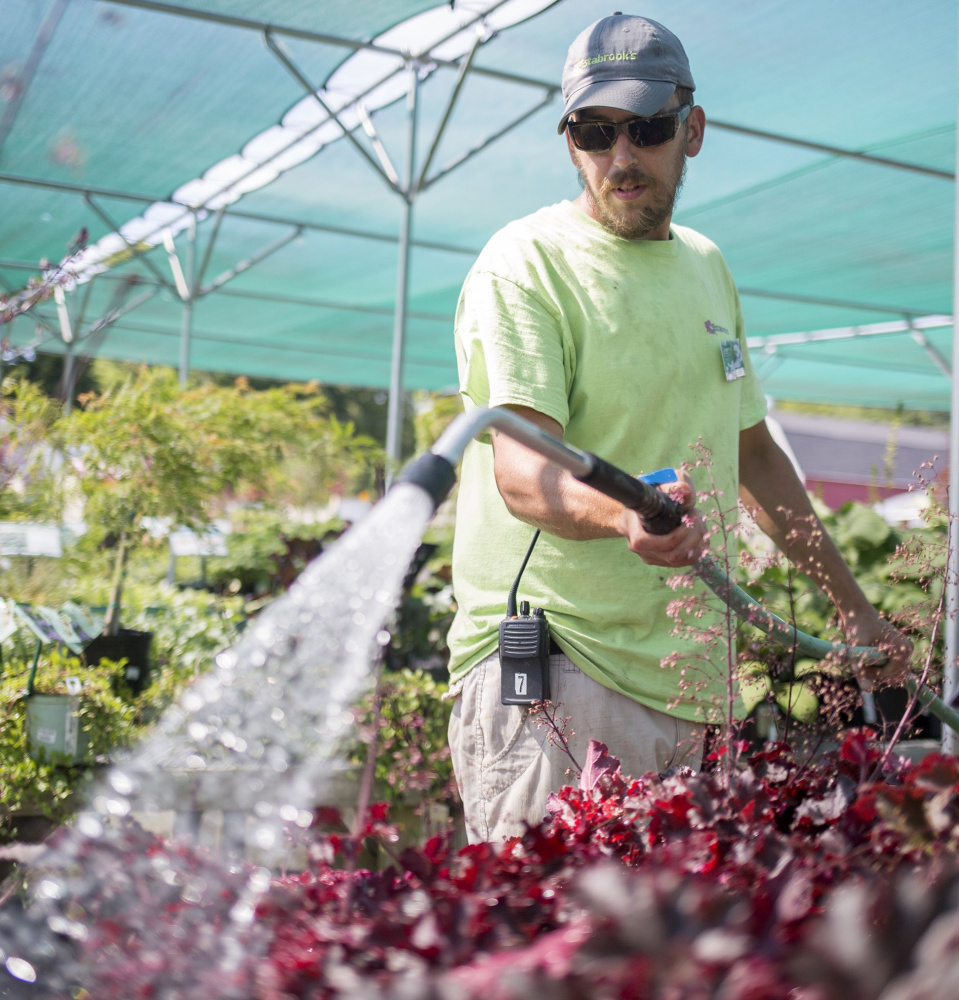AUGUSTA — State officials and meteorologists said Thursday they will begin an information campaign urging the public not to waste water, but that water-use restrictions are not warranted despite the dry weather over the past several months in Maine.
The state Drought Task Force convened for the first time since 2002 because of what has been called “significant drought conditions” in the southern two-thirds of the state that are expected to get worse, officials said. The U.S. Drought Monitor website on Thursday listed the northern part of central Maine as “abnormally dry” and the southern part as having a “moderate drought.”
Bruce Fitzgerald, director of the Maine Emergency Management Agency, said the agency’s website will offer water-saving tips to help people get the most from the water they are using.
“For people who have gardens, they can water it early in the day and maybe for only a few minutes,” Fitzgerald said. “They need to be aware when they’re doing laundry that it’s a full load of laundry and to just be aware and smart.”
Fitzgerald said they’d be working with their partners around the state to make sure their constituents know what they can do to mitigate drought impacts.
Lack of rain isn’t the only thing contributing to the dry conditions. Fitzgerald said officials have been watching water conditions since the annual River Flow Advisory Commission meeting in March because below-average snowfall last winter meant there wasn’t a lot of snowmelt to recharge groundwater.
Tom Hawley, of the National Weather Service office in Gray, said most of the state had half of the normal snowfall, and the snow melted about four weeks earlier than usual.
Hawley said he expects drought conditions to persist through the summer.
“I don’t see any real changes in the outlook, and it looks like we’ll continue to be dry,” he said.
Nicholas Stasulis, a hydrologic technician for the U.S. Geologic Survey in Maine, said wells across the state, including those the survey monitors in Sanford, Poland and Augusta, have low water levels. He said Poland and Sanford’s were the lowest on record for the month of July.
“We are where we are in part because we started with a very low snow pack at the end of March,” Stasulis said.
Stasulis said surface water data conditions in northern Maine are closer to normal, and there have been short periods of normal surface water flow statewide following localized rain. But thunderstorms or other periodic rain have little effect on groundwater, he said.
With conditions continuing to be dry, officials are worried about the risk of brush fires and the availability of water to fight them, Fitzgerald said.
Roger Crouse, of the Maine Drinking Water Program, said he has received reports of low levels in some wells, but none that have gone dry.
A chart of the average rainfall at measuring stations throughout the state shows significant drops in precipitation across Maine over the last six months.
Augusta received 7.17 inches of rain over the last three months and 9.41 inches of rain since April, about 3.5 and 5.05 inches below normal, respectively. Sanford has had the biggest drop, with 8.42 inches less rain than normal over the past four months.
Fitzgerald wants the task force to meet monthly, unless conditions deteriorate significantly.
“We need everybody to chip in, because none of us can make it rain,” he said.
The state had worse conditions in 2001-02, when about 17,000 private wells went dry in the nine months prior to April 2002. More than $32 million in crops were lost in 2001 and 2002.
“People remember that drought and remember how dry it was then,” he said. “We’ve had beautiful weather, and it’s been a great summer, but that means we haven’t had a lot of rain.”
Send questions/comments to the editors.


